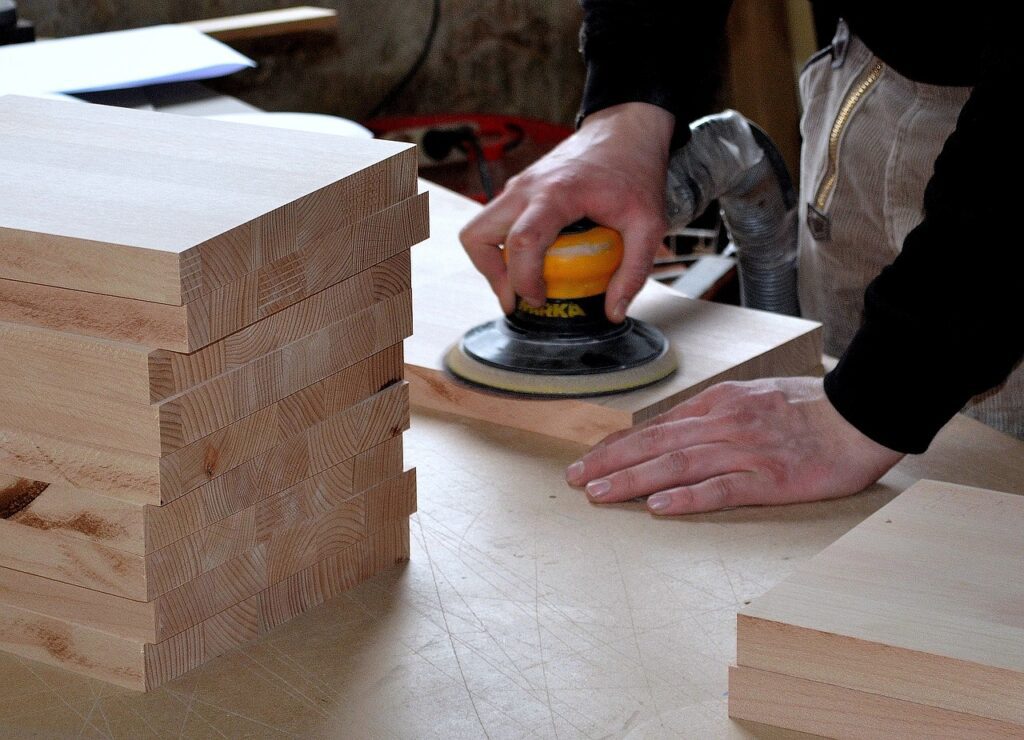
DIY Floor Sanding: What to Watch Out For
As timber flooring suppliers in Brisbane and Sydney, we have heard about pretty much every mistake that is humanly possible to make while sanding a floor. Recently, we provided a blog post explaining how to sand and finish a hardwood floor. In this piece, we would like to tell you how to avoid the most common mistakes when sanding.
The Basics: a Recap
In our other blog post, we went into a bit of detail about how to sand and finish a hardwood floor. Here is the short version:
1. Go to a hire shop to find a floor sander and a portable edge sander. Ask them to show you how to operate both sanders.
2. Remember to remove everything from the room, including curtains and rugs. Cover electrical outlets, light fixtures and anything else left in the room with plastic and duct tape. Open doors and windows.
3. Rough sanding will be done diagonally in two phases: 24 grit and 40 grit. Medium sanding will be done with 80 grit. Fine sanding will be done with 100-120 grit. Rough and medium sanding is done by starting in a corner and pushing the sander diagonally. Fine sanding is done up and down the boards. Remember to always tilt the sander so there is no contact with the floor when you start or stop. More about this later.
4. Finish the floor to your own specifications, but always follow manufacturer’s instructions.
Common Problems
Obviously, the goal is to have a professional finish on your floor. While the best solution is usually to hire a professional, anyone who wants to do it themselves has access to the same professional quality finishes as the professionals do. However, the industrial sanding equipment that is used by professionals is of superior quality and balance and you won’t have access to it. This means you cannot make mistakes while sanding.
The biggest problem is that most of your mistakes are only visible once you have completed the job. Then, of course, it is too late to do anything about them unless you want to start over.
If you make any mistakes in sanding, they will be magnified and accented by the coating. By far, the most common mistake that amateurs make in the sanding process is to ignore the warning that the sander should never be in contact with the floor, even for a split-second, while the sander is being turned on or turned off.
You must always lean the sander onto the back wheels until there is no contact between the sanding belt and the floor before turning it on or off.
Always remember that you don’t have a lot of room for mistakes. While your average tongue and groove hardwood flooring is 19 mm thick, you only have about 5 mm to work with when sanding. Another common mistake is to concentrate on one area of the floor that is uneven or has surface imperfections. This can cause you to flirt with the 5 mm limit and have to take that much off of the entire floor. Don’t work too deep in any one spot.
How to Avoid Mistakes
By far, the most dependable method to avoid mistakes is to sand your floor like the professionals do. Start in one corner or at one wall and go all the way to the other wall and back. Make sure that every pass goes from edge to edge. When you get to the fine sanding, you aren’t removing a lot of timber. You are basically smoothing out the top of the surface. At that point, you can overlap slightly to ensure that you aren’t leaving ridges.
Occasionally, you will have a machine that vibrates too much and leaves what are called “chatter marks.” To prevent this, you can also find a rotary sander and use it for your fine sanding. If necessary, go all the way to 150 grit.
Call Narangba Timbers
It all starts with high-quality hardwood. Call 1300 477 024.